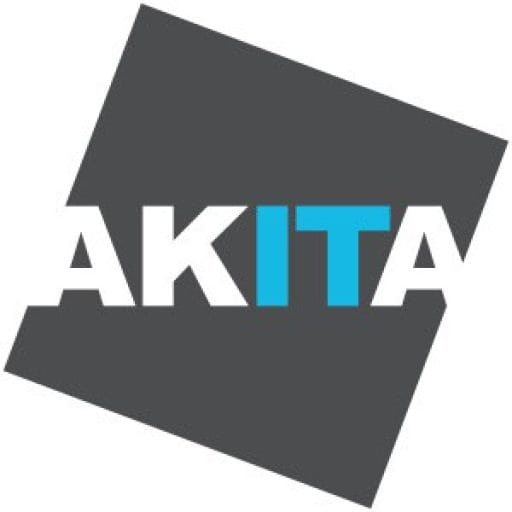Choosing between hosted IT (run from a cloud environment) and onsite IT (run from owned hardware) is one of the key decisions an organisation needs to make to ensure its IT setup is both cost and effort-effective.
Below are some considerations you should make when choosing between hosted IT vs onsite IT for your organisation.
Benefits of Hosted IT
- The principal benefit of hosted IT is that your organisation is free from the costs of acquisition, installation and maintenance of key IT hardware (primarily servers).
- Hosted IT generally comes with external support, so organisations save money on the staff to operate and maintain IT equipment. You’ll also save on powering that equipment (which can run into thousands of pounds each year).
- Because your IT or cloud partner manages and owns the equipment that supports your cloud environment, they’ll absorb the cost of upgrading equipment.
- Upscaling is also much faster and less expensive – generally, you’ll only pay for the data you need and can add new capacity easily (Akita can expand customer cloud capacity in minutes if needed).
- Cloud hosting requires high-end, enterprise-level IT equipment, so organisations generally benefit from better systems performance as a result of choosing a cloud provider. Equally, the security of cloud infrastructure is generally higher than onsite IT.
- Automated backups of cloud-hosted data improve the overall security of your business information. A cloud-hosted setup should also offer your organisation with a reliable backup and disaster recovery solution.
- Most cloud infrastructure will be monitored 24/7 either by software, staff or both. There will also be a contractually obligated uptime for the cloud environment, ensuring the reliability of your hosted setup.
Drawbacks of Hosted IT
- The downside of hosted IT is that it requires an internet connection, and ideally a good one. An intermittent connection will leave you unable to access your data. That said, there are few organisations that aren’t reliant on a stable internet connection now (Akita can also provide 4G backup and point-to-point internet solutions as backups).
- Control over your data is limited to the allowance of the hosting company. You are also reliant on them for security (this is why Akita and its data centre environments are independently verified to ISO 9001 and 27001 security standards).
- Technical issues involving hosted IT, though rare, take issues out of your hands. It requires your cloud partner to act in a time-sensitive manner. This is why Akita provides strict response SLAs for all of our cloud services.
- Organisations may face GDPR implications if their data is hosted outside of the UK. Security at such locations may also not be up to standard (Akita only uses ISO 9001 and 27001 accredited UK data centres for this reason).
Benefits of Onsite IT
- The main advantage of onsite IT is complete control of the IT infrastructure. Your company can scale up or down as it pleases.
- Your organisation is in charge of its own security and systems. You’ll know your setup and can implement the best security you can afford.
- Your data is in the hands of your organisation, which means you don’t need the internet to access your data. It also means there are potentially fewer GDPR implications for data storage (which may be important to organisations in some industries).
- Downtime and technical difficulties are within your control. Managers may find comfort in being able to talk to, and watch, staff make fixes.
Drawbacks of Onsite IT
- Onsite IT is much more expensive in most cases. Your organisation has to spend on acquiring, installing, and maintaining your IT infrastructure. You also have to spend on hiring personnel to work on and maintain it. And you’ll also pay to power it all.
- It is both expensive and time-consuming to perform upgrades, especially where hardware is involved. Organisations have to budget for the potential of a server failure at the least convenient time, and the ramifications that might have to business continuity.
- Without a decent backup and disaster recovery plan – which you’ll also have to manage yourself – your organisation stands the risk of losing everything in the case of a disaster (anything from a major fire to a leaking pipe above your equipment).
- From backup to capacity expansion, the chances of human error are increased because your staff will be interacting with your IT infrastructure more than if data is hosted in a cloud network.
- You are limited to the expertise of your IT staff member(s) if something goes wrong. If a problem occurs out-of-hours or over a weekend, it may not be discovered until it is too late, or a fix may not happen until the IT staff’s contracted hours.
Hosted IT vs Onsite IT Solutions: Conclusion
Ultimately, your organisation’s requirements are what determines the best IT infrastructure setup.
If you want total control, onsite IT solutions may be a more attractive option. However, you have to bear much more responsibility for maintenance, expansion and security, which are both complex and expensive.
In contrast, while hosted IT means relinquishing some control over organisational data, you’ll benefit from the convenience. Your setup is in the hands of the trusted and professional IT partner running your hosted environment, who will usually have a team of people looking after your data. Your setup will be flexible and you’ll be able to forget about maintenance. Crucially, you’ll also make significant savings across all areas.
Akita is a leading provider of business cloud services. For more information about hosted or onsite IT solutions:
View More




